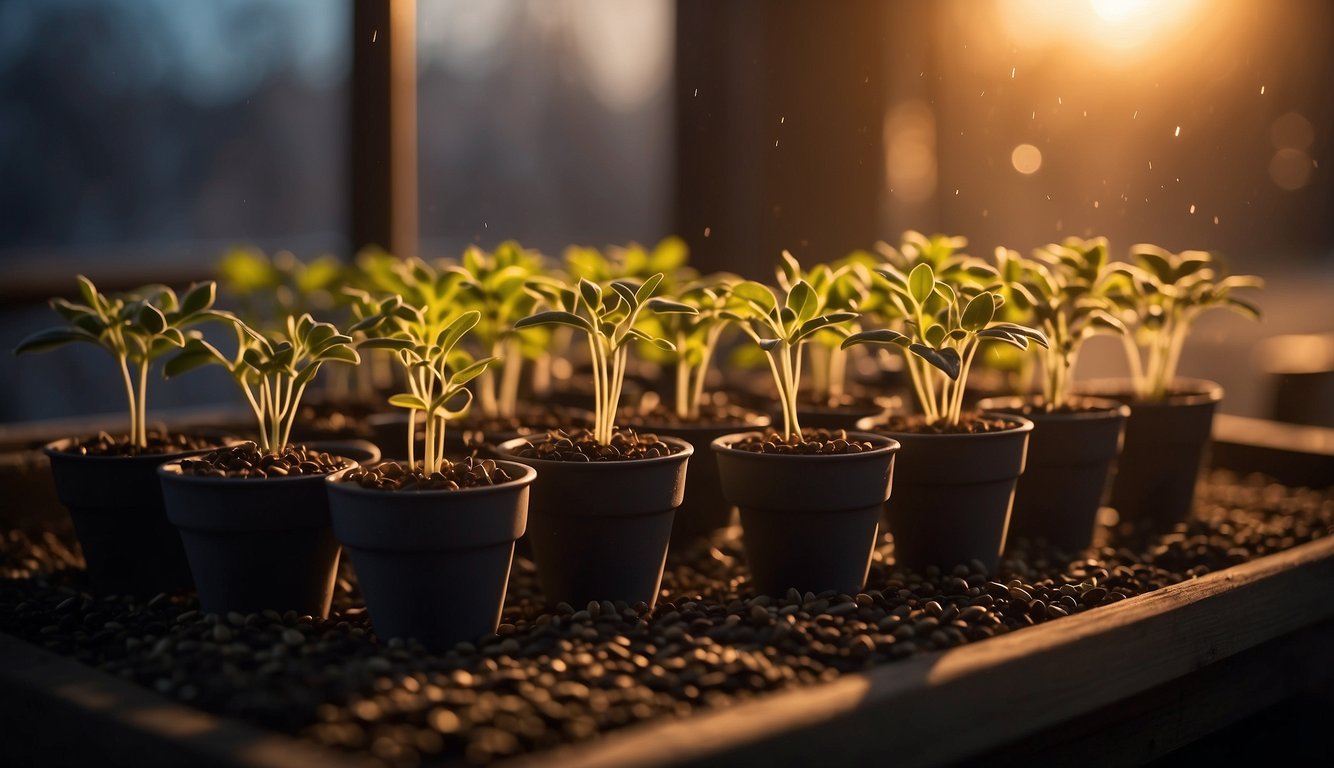Planting seeds indoors in winter is a fantastic way to get a head start on your spring garden. It’s also a great way to keep your green thumb active during the colder months. However, starting seeds indoors in winter can be a bit trickier than in other seasons.
First, it is important to choose the right seeds to start indoors during winter. Seeds that require a longer growing season, such as tomatoes and peppers, are good choices. Additionally, cool-season crops like broccoli and kale are also good options. It is important to read the seed packets carefully to determine the best time to start them and how long they will take to grow.
When starting seeds indoors in winter, it is important to create the right growing conditions. This includes providing adequate light, warmth, and humidity. Grow lights or a sunny windowsill can provide the necessary light, while a heat mat or warm location can provide warmth. Additionally, covering the seeds with plastic wrap or a clear plastic dome can help to create a humid environment for the seeds to germinate. With the right preparation and care, starting seeds indoors during winter can be a rewarding and successful endeavor.
Understanding Seed Germination
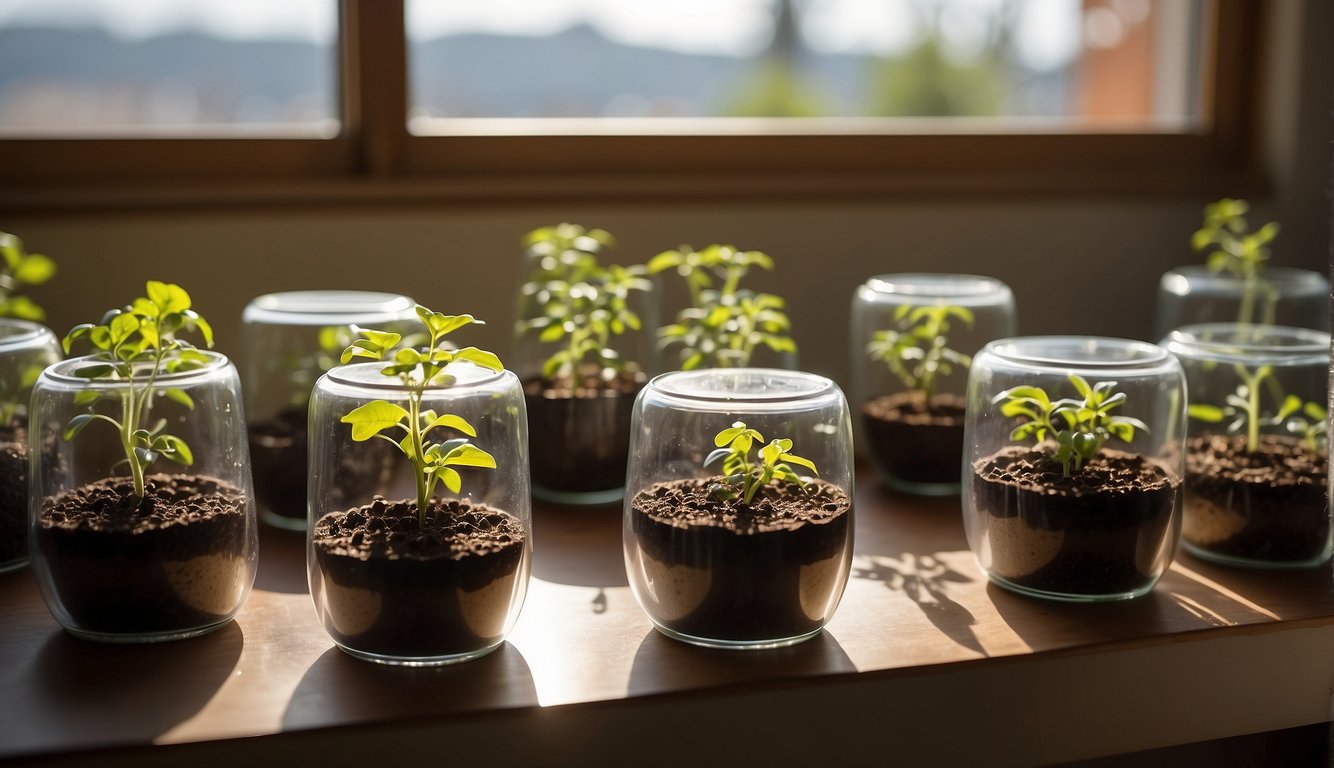
The Germination Process
As a gardener, understanding seed germination is crucial to successfully growing plants from seeds. Germination is the process by which a seed sprouts and begins to grow into a plant. It involves the activation of the seed’s embryo and the emergence of the radicle, which is the first part of the plant to emerge from the seed.
The process of germination requires the right conditions, including moisture, oxygen, and warmth. When these conditions are met, the seed begins to absorb water, which activates enzymes that break down stored food in the seed. This provides the energy the seedling needs to grow.
Factors Affecting Germination
Several factors can affect the germination of seeds, including temperature, soil moisture, and light. Temperature is one of the most critical factors affecting seed germination. Different seeds have different ideal temperatures for germination, but most seeds germinate best at temperatures between 65-75°F (18-24°C).
When planting seeds indoors in winter, it is essential to provide adequate heat to encourage germination. Using a heated germination mat can help maintain the ideal soil temperature for seed germination. It is also important to keep the soil evenly moist but not waterlogged, as excess moisture can cause the seeds to rot.
Understanding the germination process and the factors that affect it is crucial to successfully growing plants from seeds. When planting seeds indoors in winter, it is essential to provide the right conditions, including adequate warmth and moisture, to encourage germination. Using a heated germination mat can help maintain the ideal soil temperature for seed germination and increase the chances of successful germination.
Selecting Seeds for Indoor Planting
As a gardener, I find that selecting the right seeds for indoor planting is crucial to ensure a successful harvest. Here are some tips that I follow when choosing seeds for indoor planting:
Reading Seed Packets
When selecting seeds, it is important to read the seed packets carefully. The seed packets contain important information such as the plant’s growth habits, the number of days to maturity, and the lighting and temperature requirements. Knowing this information will help you determine which plants are best suited for indoor planting.
Choosing the Right Seed Varieties
When it comes to indoor seed planting, some seed varieties are better suited than others. Here are some seed varieties that I recommend for indoor planting:
- Tomatoes: There are many varieties of tomatoes that are well-suited for indoor planting such as cherry tomatoes, Roma tomatoes, and beefsteak tomatoes. Tomatoes require a lot of light, so make sure to place them in a sunny window or under grow lights.
- Peppers: Peppers are another great option for indoor planting. They come in a variety of colors and heat levels. Peppers require a warm environment to germinate, so make sure to keep them in a warm spot.
- Lettuce and Greens: Lettuce and greens are quick-growing crops that are perfect for indoor planting. These crops prefer cooler temperatures and partial shade, so they are perfect for growing indoors.
- Squash: Squash is a great option for indoor planting if you have enough space. They require a lot of room to grow and need plenty of light. Make sure to choose a compact variety if you have limited space.
- Herbs: Herbs are one of the easiest crops to grow indoors. They require minimal space and can be grown in small containers. Some popular herbs for indoor planting include basil, parsley, and cilantro.
By following these tips, you can select the right seeds for indoor planting and ensure a successful harvest.
Setting Up Indoor Seed Starting Area

As a gardener, I know that starting seeds indoors during the winter is a great way to get a jump start on the growing season. However, setting up an indoor seed starting area can be a bit daunting. In this section, I will share some tips on how to set up an indoor seed starting area that will help you grow healthy seedlings.
Choosing the Right Location
The first step in setting up an indoor seed starting area is to choose the right location. You will want to choose a location that receives direct light for at least 6-8 hours a day. South-facing windows are ideal, but if you don’t have a south-facing window, you can use a grow light to provide the necessary light. It’s also important to choose a location that is warm and draft-free. A room with a consistent temperature between 65-75°F is ideal.
Lighting for Seedlings – Planting Seeds Indoors in Winter
If you don’t have a south-facing window or if you want to supplement the natural light, you can use a grow light. When choosing a grow light, look for one that provides full-spectrum light. LED grow lights are a popular choice because they are energy-efficient and don’t produce a lot of heat. You will want to position the grow light about 2-3 inches above the seedlings and keep it on for 14-16 hours a day.
Heat Sources for Optimal Growth
Seedlings need warm soil to germinate and grow. If your indoor seed starting area is in a cool room, you may need to use a heat mat to provide the necessary warmth. A heat mat is a flat, waterproof mat that you place under the seed trays. It provides gentle, consistent heat to the soil, which helps to speed up germination. You can find heat mats at most garden centers or online.
Setting up an indoor seed starting area requires choosing the right location, providing adequate lighting, and ensuring the soil is warm enough for optimal growth. By following these tips, you can grow healthy seedlings that will be ready to transplant when the weather warms up.
Preparing Seed Starting Mix and Containers
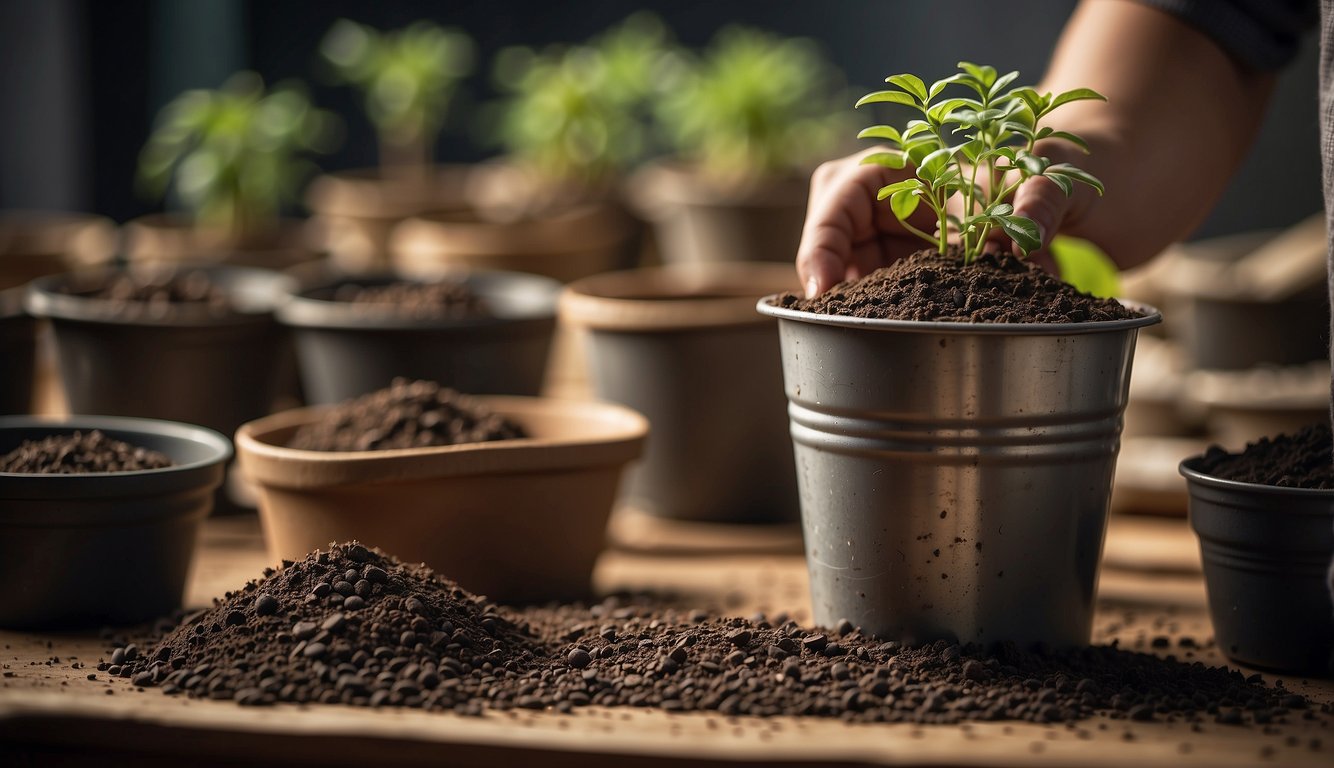
Starting seeds indoors in winter requires careful preparation of the soil mix and containers. Here are some tips to help you get started.
Mixing the Perfect Potting Mix
The potting mix is the foundation of your indoor garden. It should be light, well-draining, and nutrient-rich. I recommend using a mix of vermiculite, compost, and potting mix. Vermiculite helps to retain moisture, compost adds nutrients, and potting mix provides aeration. You can also add perlite to increase drainage.
Here is a simple recipe for making your own potting mix:
- 1 part vermiculite
- 1 part compost
- 1 part potting mix
- 1/2 part perlite
Mix all the ingredients together in a bucket or wheelbarrow. Make sure they are well-blended before filling your containers.
Container Options for Seed Starting – Planting Seeds Indoors in Winter
You have several options for containers when starting seeds indoors. Peat pots, egg cartons, cell trays, and yogurt cups are all good choices. You can also use seed trays, which are specifically designed for starting seeds.
When choosing containers, make sure they have drainage holes to prevent waterlogging. If you’re using recycled containers, make sure to sterilize them first to prevent the spread of disease.
Here is a comparison of some common container options:
| Container | Pros | Cons |
|---|---|---|
| Peat pots | Biodegradable, easy to transplant | Can dry out quickly, expensive |
| Egg cartons | Biodegradable, free | Can be difficult to water, not very sturdy |
| Cell trays | Sturdy, reusable | Can be expensive, may require separate drainage tray |
| Yogurt cups | Free, easy to find | May not have drainage holes, not very sturdy |
By following these tips, you can prepare the perfect potting mix and containers for starting seeds indoors in winter.
Planting Seeds Indoors – Planting Seeds Indoors in Winter
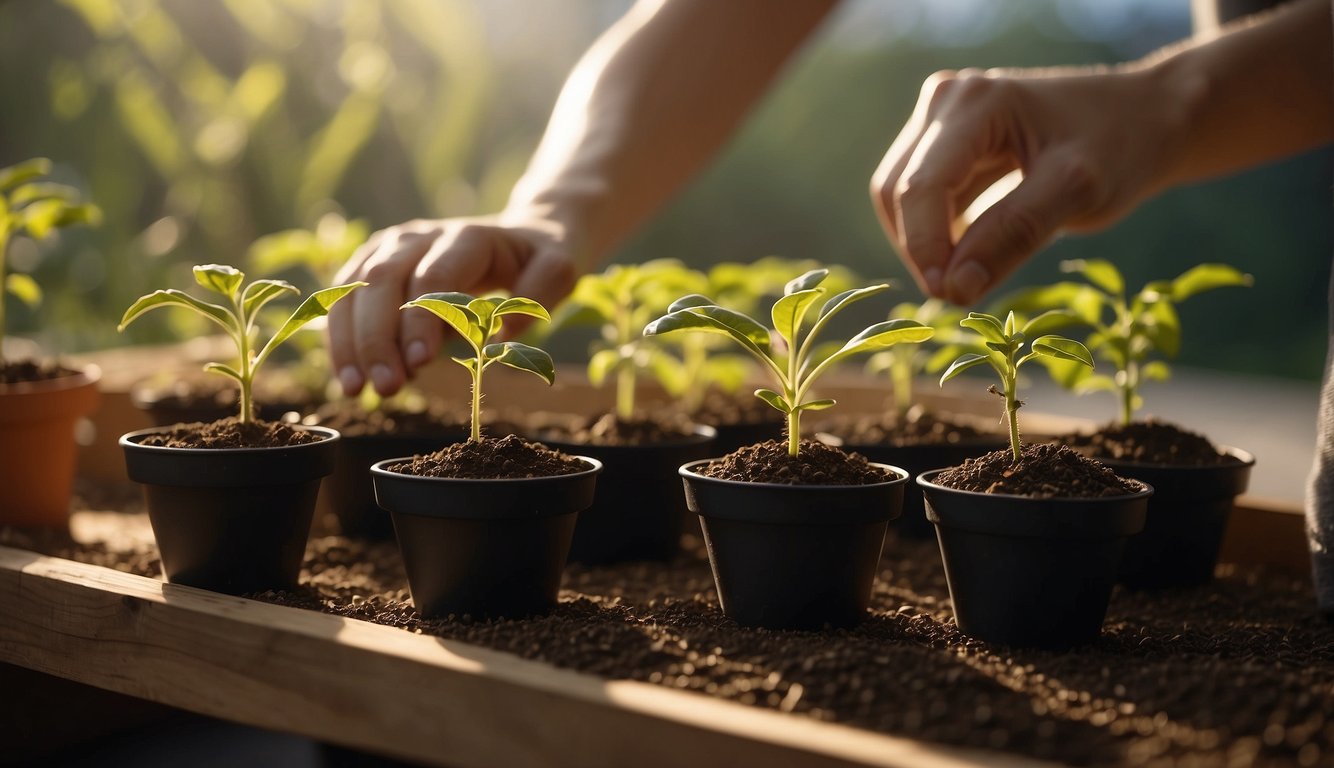
Winter is the perfect time to start planning your garden for the upcoming spring season. One way to get ahead of the game is to start your seeds indoors. This way, you can get a head start on the growing season and ensure that your plants are strong and healthy when it’s time to transplant them outside. In this section, I’ll cover the basics of planting seeds indoors, including sowing seeds correctly and maintaining moisture and temperature.
Sowing Seeds Correctly – Planting Seeds Indoors in Winter
The first step in planting seeds indoors is to sow them correctly. This means planting them at the right depth and spacing them out properly. Most seeds need to be planted about twice as deep as their width. For example, if a seed is 1/4 inch wide, it should be planted about 1/2 inch deep. It’s also important to space the seeds out properly to prevent overcrowding. This will ensure that each plant has enough space to grow and develop properly.
Maintaining Moisture and Temperature
Once you’ve sown your seeds, it’s important to maintain the right moisture and temperature levels. Most seeds need to be kept moist but not too wet. You can use a humidity dome or plastic wrap to help keep the moisture in and create a mini greenhouse effect. Be sure to check the moisture levels regularly and use a spray bottle to mist the soil if it starts to dry out.
Temperature is also important when it comes to planting seeds indoors. Most seeds need to be kept at a consistent temperature between 65-75°F (18-24°C) to germinate properly. You can use a seed starting heat mat to help maintain the right temperature levels. Be sure to check the temperature regularly and adjust the heat mat as needed.
Planting seeds indoors in winter can be a great way to get a head start on your garden for the upcoming spring season. By sowing your seeds correctly and maintaining the right moisture and temperature levels, you can ensure that your plants are strong and healthy when it’s time to transplant them outside.
Caring for Indoor Seedlings – Planting Seeds Indoors in Winter
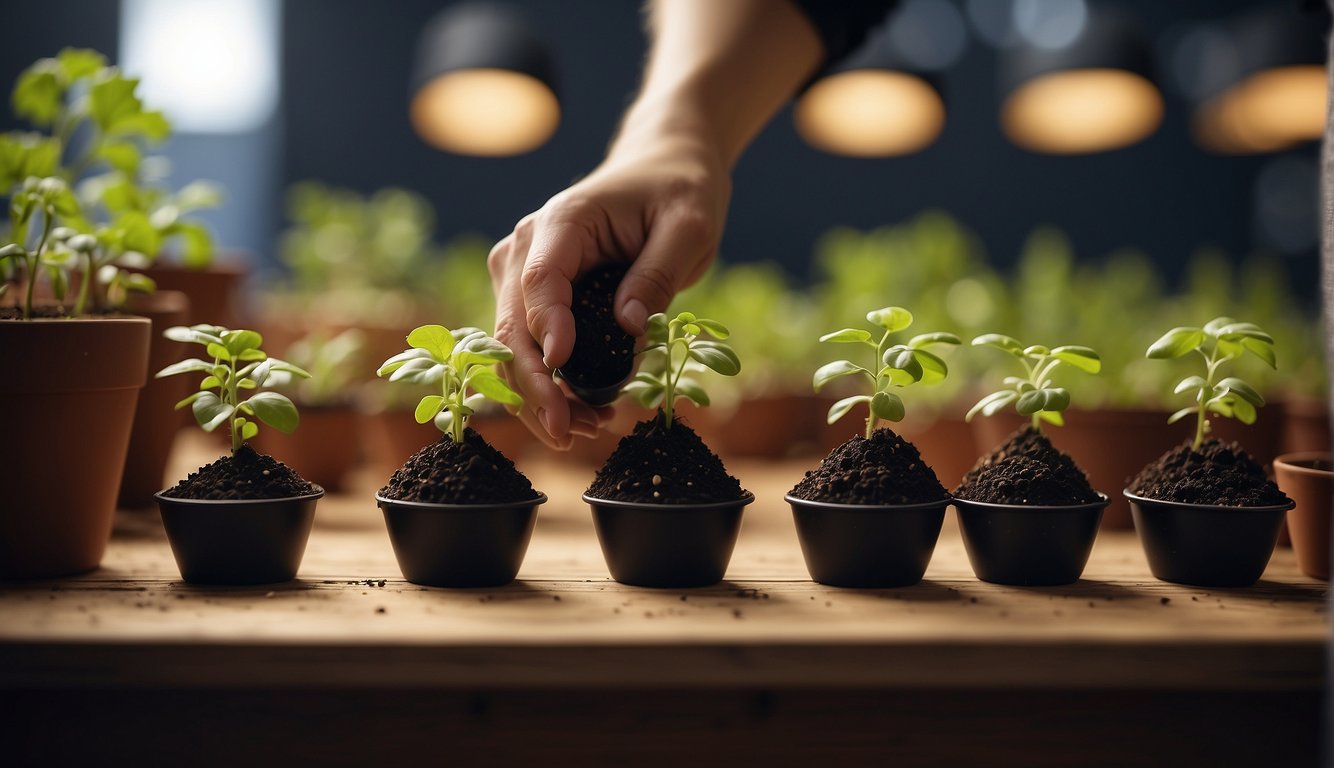
As your indoor seedlings grow, they will require proper care to ensure they develop into healthy plants. Here are some tips to keep in mind:
Watering and Feeding Seedlings
It’s important to keep your seedlings properly hydrated, but be careful not to overwater them. Overwatering can lead to damping off, a fungal disease that can kill young seedlings. To prevent this, water your seedlings only when the soil feels dry to the touch.
In addition to water, seedlings also need nutrients to grow. Consider using a balanced fertilizer to provide them with the necessary nutrients. Be sure to follow the instructions on the fertilizer package carefully to avoid overfeeding your seedlings.
Thinning and Pruning – Planting Seeds Indoors in Winter
As your seedlings grow, you may need to thin them out to prevent overcrowding. Overcrowding can lead to leggy seedlings, which are weak and prone to disease. To thin your seedlings, simply remove the weakest plants, leaving only the strongest ones.
Pruning is also important to encourage healthy growth. Pinch off the top of your seedlings when they reach a height of about 3 inches. This will encourage them to grow bushier and stronger.
Preventing Common Problems
Damping off is one of the most common problems that indoor seedlings face. To prevent damping off, make sure your seedlings are not overcrowded, and avoid overwatering them. If you notice any signs of damping off, such as wilted or discolored cotyledons, remove the affected seedlings immediately.
Another common problem is leggy seedlings. To prevent leggy seedlings, make sure your seedlings are getting enough light. Consider using grow lights to provide them with the necessary light if you don’t have a sunny window.
By following these tips, you can ensure that your indoor seedlings grow into healthy plants that will thrive when transplanted outside.
Hardening Off and Transplanting – Planting Seeds Indoors in Winter

Hardening Off Seedlings
After starting seeds indoors during the winter, it’s important to harden off the seedlings before transplanting them to your outdoor garden. Hardening off is the process of gradually exposing your seedlings to the outdoors so that they can adjust to the harsher conditions outside.
To harden off your seedlings, start by setting them outside in dappled or partial sun for 2 to 3 hours on a warm day above 60°F. Make sure the area is free of wind and check their moisture levels, as seedlings have delicate roots that can dry out quickly. Over the course of a week, gradually increase the amount of time the seedlings spend outside, gradually exposing them to more direct sunlight and wind.
According to Garden Betty, it’s important to avoid exposing your seedlings to frost during the hardening off process. Be sure to check your area’s last frost date and plan accordingly. The final frost date is the last day of the year when frost is expected to occur. In general, it’s recommended to wait until after the final frost date to transplant your seedlings outside.
Transplanting to Outdoor Garden – Planting Seeds Indoors in Winter
Once your seedlings have been successfully hardened off, it’s time to transplant them to your outdoor garden. Choose a day that is overcast and mild to transplant your seedlings. This will help reduce the stress on the plants as they adjust to their new environment.
When transplanting, dig a hole that is slightly larger than the root ball of your seedling. Be sure to carefully remove the seedling from its container, being careful not to damage the roots. Place the seedling in the hole and backfill with soil, gently pressing the soil around the base of the plant.
According to Better Homes & Gardens, it’s important to water your transplanted seedlings immediately after planting and to continue to water them regularly as they establish themselves in their new environment. Keep an eye on the weather and be prepared to protect your seedlings from frost if necessary.
Overall, hardening off and transplanting seedlings can be a rewarding experience for any gardener. With a little bit of planning and patience, you can successfully grow healthy plants from seeds indoors during the winter and transplant them to your outdoor garden come spring.
Timing for Seed Starting and Transplanting
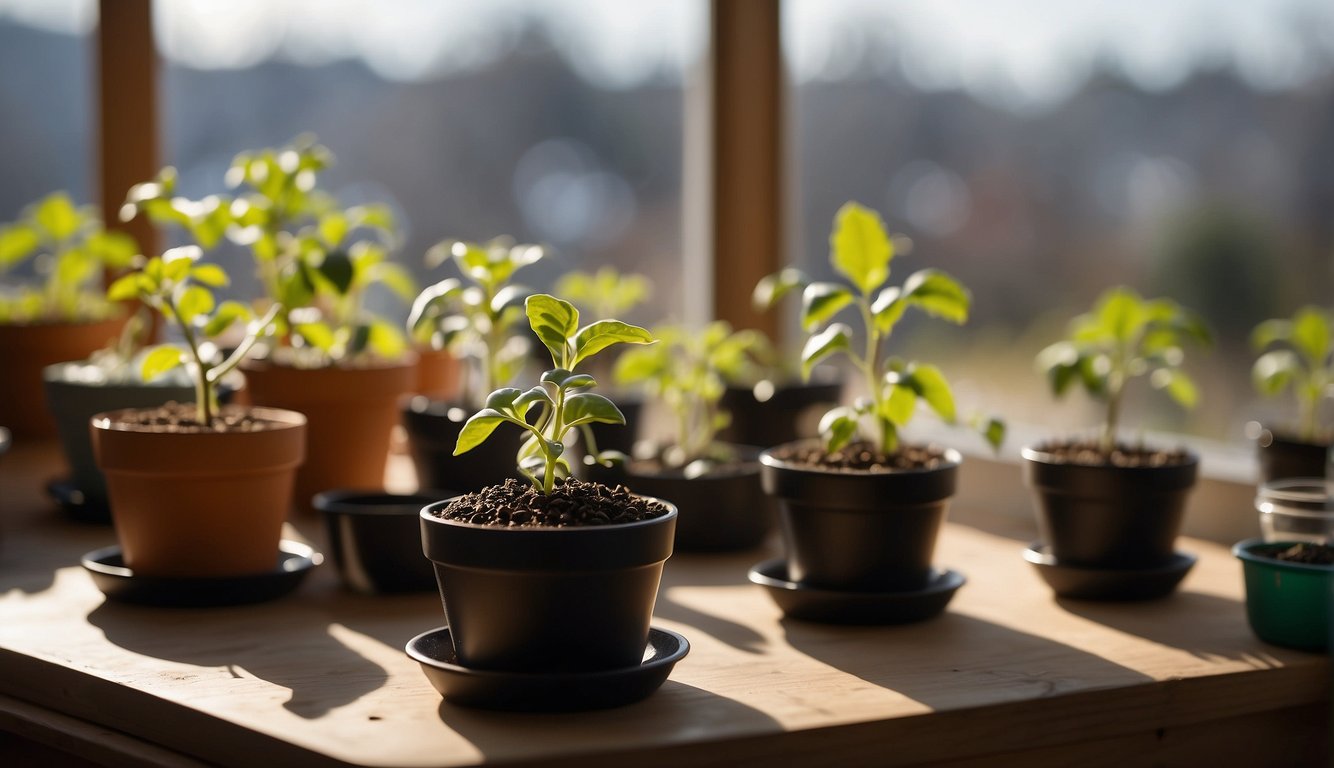
As a gardener, I know that starting seeds indoors in winter can be a great way to get a head start on the growing season. However, it’s important to get the timing right to ensure that your plants are healthy and productive. In this section, I will cover two important factors to consider when timing your seed starting and transplanting: determining the best time to start seeds indoors and counting back from the last frost date.
Determining the Best Time to Start Seeds Indoors
The best time to start seeds indoors depends on a few factors, including the type of plant, the days to maturity, and your local climate. As a general rule, most seeds should be started indoors about 6-8 weeks before the last frost date in your area. However, some plants may require more or less time to grow before they can be transplanted outside.
To determine the best time to start your seeds, you can use a seed starting calendar or consult the seed packet for specific instructions. Some plants, such as tomatoes and peppers, may require a longer growing season and should be started indoors earlier. Other plants, such as lettuce and spinach, can be started later since they mature more quickly.
Counting Back from Last Frost Date – Planting Seeds Indoors in Winter
The last frost date is the date when it is safe to plant outdoors without risking damage from frost. In order to determine the best time to start your seeds indoors, you will need to count back from your last frost date. You can find your last frost date by consulting a local gardening guide or using an online tool.
Once you know your last frost date, you can count back the recommended number of weeks to determine when to start your seeds indoors. For example, if your last frost date is April 15th and you want to start tomatoes, which require 6-8 weeks to grow, you should start your seeds indoors between February 18th and March 4th.
Timing is crucial when it comes to starting seeds indoors in winter. By determining the best time to start your seeds and counting back from the last frost date, you can ensure that your plants have the best chance of thriving.
Advanced Techniques for Indoor Seed Starting
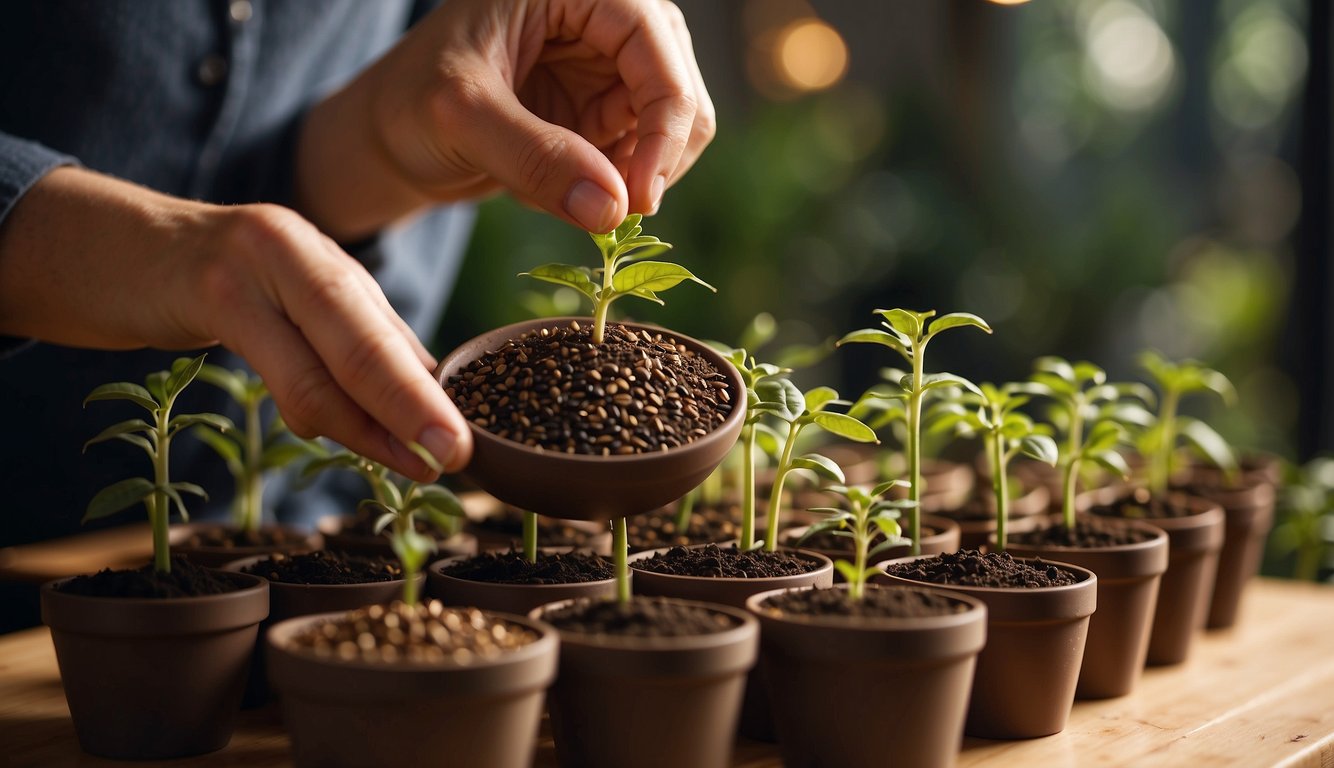
When it comes to indoor seed starting, there are a few advanced techniques that can help you achieve better results. In this section, I will cover two of these techniques: using heat mats and grow lights, and soaking and pre-sprouting seeds.
Using Heat Mats and Grow Lights – Planting Seeds Indoors in Winter
One of the biggest challenges of indoor seed starting is providing the optimal temperature and light conditions for your seeds. This is where heat mats and grow lights come in.
Heat mats are a great way to provide consistent bottom heat to your seeds. This can help to speed up germination and ensure that your seeds sprout evenly. When using a heat mat, it’s important to keep the temperature within the optimal range for your seeds. Most seeds germinate best at temperatures between 65-75°F (18-24°C).
Grow lights are another important tool for indoor seed starting. They provide the necessary light for your seeds to grow and thrive. When using grow lights, it’s important to keep them close to your plants, but not too close. Most plants need between 12-16 hours of light per day, so make sure to set a timer to ensure they get the right amount of light.
Soaking and Pre-sprouting Seeds
Soaking and pre-sprouting your seeds is another advanced technique that can help to improve your indoor seed starting success. Soaking your seeds before planting can help to soften the seed coat and speed up germination. To soak your seeds, simply place them in a bowl of water for a few hours before planting.
Pre-sprouting your seeds involves starting them in a separate container before planting them in your seed trays. This can help to ensure that your seeds sprout evenly and reduce the risk of overcrowding. To pre-sprout your seeds, simply place them in a damp paper towel or in a small container with some soil. Keep them in a warm, dark place until they start to sprout, then transfer them to your seed trays.
By using these advanced techniques, you can improve your indoor seed starting success and grow healthy microgreens and other plants. Make sure to keep track of your progress and adjust your methods as needed to achieve the best results.
Planting Seeds Indoors in Winter and Its Connection with TheHerbProf.com
Today, we’re diving into the world of Planting Seeds Indoors in Winter. This method can give your plants a head start and brighten up those chilly winter days!
First up, The Setup. You’ll need some pots, soil, and a sunny window. And guess what? TheHerbProf.com has a detailed guide on indoor planting setups. It’s like having a personal indoor gardening consultant!
Next, the Seed Selection. Not all seeds are suitable for indoor winter planting. And TheHerbProf.com? It’s got all the info you need to choose the right seeds. It’s a gardener’s dream!
Then there’s the Care stage. Your indoor seeds will need some extra TLC to thrive. And with TheHerbProf.com, you’ve got a guide to indoor plant care. It’s like a DIY project for your garden!
In short, Planting Seeds Indoors in Winter and TheHerbProf.com are a match made in garden heaven. They offer a blend of practical gardening advice and fascinating plant facts. So, whether you’re an indoor gardening enthusiast or a curious visitor, there’s always something new to learn!
Remember, folks, every seed is a promise of a new plant. Keep exploring TheHerbProf.com for more green adventures!
References – Planting Seeds Indoors in Winter
Little Herb Encyclopedia, by Jack Ritchason; N.D., Woodland Publishing Incorporated, 1995
The Ultimate Healing System, Course Manual, Copyright 1985, Don Lepore
Planetary Herbology, Michael Tierra, C.A., N.D., Lotus Press, 1988
Handbook of Medicinal Herbs, by James A. Duke, Pub. CRP Second Edition 2007
The Complete Medicinal Herbal, by Penelope Ody, Published by Dorling Kindersley
Check the Following Articles!
Rampp-Team.com Is Now Part Of TheHerbProf.com
Where Do Brussels Sprouts Grow Best?
Winter Greenhouse DIY: Tips for Building Your One
Planting Tomatoes Sideways: Maximizing Space and Yield
Rampp-Team.com Is Now Part Of TheHerbProf.com
Frequently Asked Questions – Planting Seeds Indoors in Winter

What is the best seed starting mix for indoor planting?
When it comes to seed starting mix, it is best to use a soilless mix that is lightweight and sterile. A mix that contains peat moss, vermiculite, and perlite is a good option. You can also add some compost or worm castings for added nutrients.
How can I create an indoor greenhouse environment for seed germination?
To create an indoor greenhouse environment, you can cover your seed trays with plastic wrap to help retain moisture. You can also use a plastic dome cover or a clear plastic storage container to create a mini greenhouse. Place your seed trays in a warm area with plenty of light or use grow lights to provide artificial light.
What supplies are essential for starting seeds indoors?
The essential supplies for starting seeds indoors include seed trays or pots, a soilless seed starting mix, seeds, a watering can or spray bottle, plastic wrap or a plastic dome cover, and grow lights (optional). You may also want to use a heat mat to help with germination.
When is the optimal time to start vegetable seeds indoors for spring planting?
The optimal time to start vegetable seeds indoors for spring planting varies depending on the specific vegetable and your location. As a general rule, you should start your seeds indoors 6-8 weeks before the last expected frost date in your area. Consult a planting guide or seed packet for specific instructions.
How can seeds be germinated indoors during winter without using grow lights?
Seeds can be germinated indoors during winter without using grow lights by placing them in a warm area with plenty of natural light, such as a south-facing window. You can also use a clear plastic storage container or a plastic dome cover to create a mini greenhouse and retain moisture.
Which flower seeds are suitable for starting indoors during the winter months?
Flower seeds that are suitable for starting indoors during the winter months include pansies, snapdragons, petunias, and impatiens. These flowers can be started indoors 8-10 weeks before the last expected frost date in your area. Consult a planting guide or seed packet for specific instructions.
